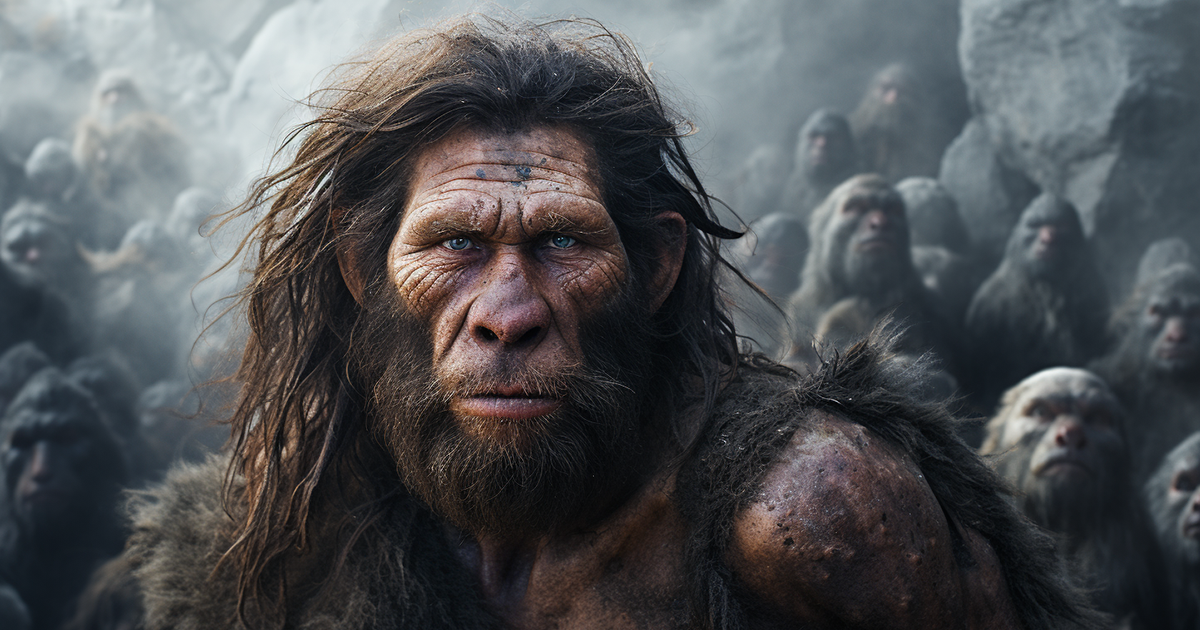Embarking on a journey through time, a remarkable bond emerges – the interwoven genetics of Neanderthals and modern humans. Despite being distinct species, compelling evidence discovered by researchers suggests that interbreeding occurred, resulting in a unique genetic inheritance that continues to impact certain individuals today.
An intriguing tale of genetic fusion unfolds, illuminating our shared evolutionary path and the complexities of our ancestry. Let’s delve into this extraordinary revelation and its implications for our understanding of human evolution.
An Expedition Across Eras
To grasp this astonishing revelation, we must venture back in time. Neanderthals, our closest extinct relatives, inhabited the Earth for millennia before vanishing approximately 40,000 years ago. Simultaneously, Homo sapiens, modern humans, emerged in Africa and set forth on their migratory journey, eventually populating the entire planet.
The Genetic Residue
Through advancements in genetic research, scientists have peered into the past, revealing the extent of our genetic ties to Neanderthals. A groundbreaking discovery unfolded when remnants of Neanderthal DNA were identified within the genetic code of present-day humans, specifically those of non-African descent.

This revelation suggests that our ancestors engaged with Neanderthals in the past and, astonishingly, intermingled with them. Consequently, a minor yet meaningful portion of Neanderthal DNA has been transmitted through generations, remaining entrenched in the genetic composition of certain individuals today.
The Advantages of Genetic Diversity
The amalgamation of modern humans and Neanderthals was not devoid of consequences; it yielded tangible advantages for our species. The enduring Neanderthal genes within our genetic pool have bestowed certain benefits, influencing traits such as immune responses, skin pigmentation, and adaptations to diverse environments.
In essence, the genetic interchange between our lineages facilitated better adjustment to various challenges in disparate regions and climates as our predecessors dispersed globally. This genetic diversity likely played a pivotal role in our survival and eventual dominance as a species.
A Common Legacy
Acknowledging our genetic correlation with Neanderthals underscores the intricate fabric of human evolution. It signifies that, despite being separate species, we share a shared history that stretches back thousands of years.
This realization also underscores the significance of conserving the genetic variety within our species. By recognizing the valuable contributions of our Neanderthal forebears, we deepen our understanding of the richness of our genetic legacy and the intricate interconnectedness that led to the emergence of modern humans.
Parting Reflections
The narrative of our genetic link with Neanderthals is a captivating segment in the tale of human evolution. It acts as a reminder that our past is not a linear account but a diverse mosaic woven together by numerous interactions, migrations, and adaptations.
As we continue to unravel the enigmas of our past, we foster a deeper comprehension of the interconnectedness of all life on Earth. Our shared genetic inheritance with Neanderthals showcases the beauty and diversity of humanity, serving as a lasting tribute to the remarkable expedition that has shaped our current existence.
